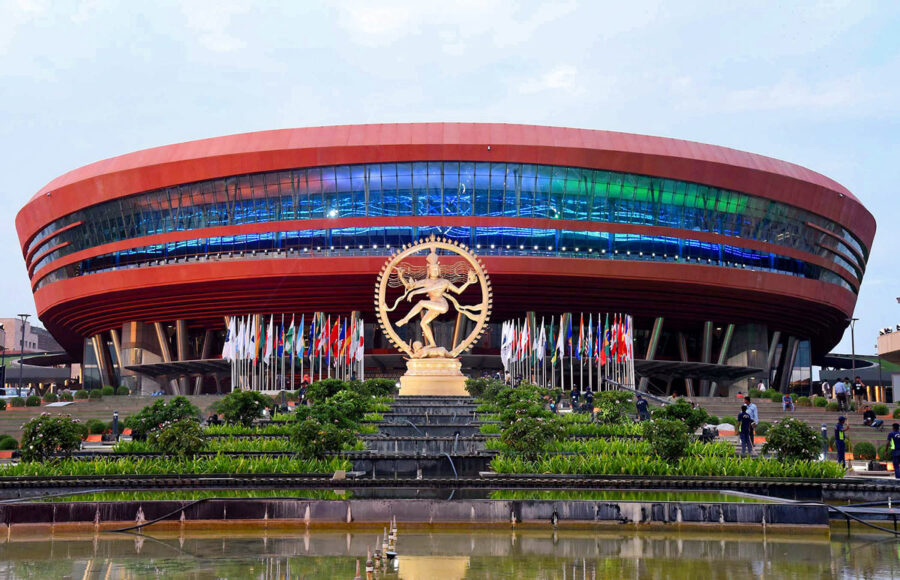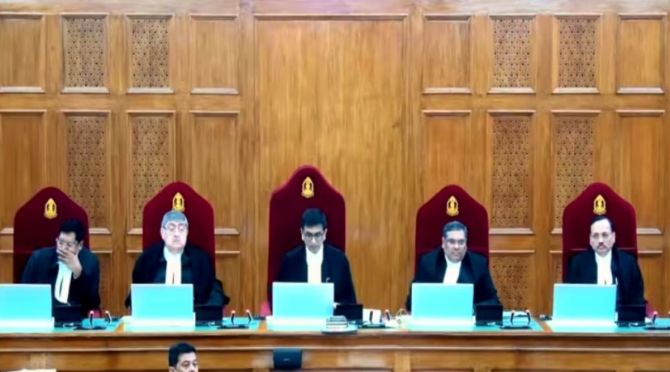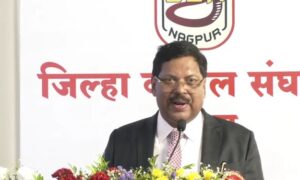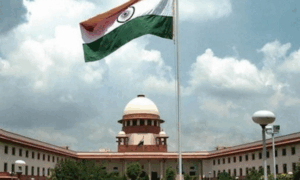
The year 2023, can aptly be called as the year with many firsts’. To begin with, India hosted the mega G20 summit with grand aplomb, the successful landing of Chandrayan 3 at the South Pole, passing of the women’s reservation bill, abrogation of Article 370, so on so forth. Looking at the year passing by, the accomplishments in 2023 has successfully portrayed India as a potential global leader.
The globally awaited 18th G20 Leaders’ Summit was held at Bharat Mandapam in New Delhi from September 9 -10, 2023 under India’s maiden G20 Presidency. The Summit witnessed the participation of its 20 member states, nine invitee nations, and 14 international organizations. As a nation committed to democracy and multilateralism, India’s presidency was a significant milestone as it sought to find practical global solutions for the benefit of all and embody the idea of “Vasudhaiva Kutumbakam,” or “the world is one family.”

“India’s G-20 presidency has become a symbol of inclusion, both within the country and beyond, representing the spirit of ‘Sabka Saath’. It has become a ‘People’s G-20’. Millions of Indians have engaged with it.” said Prime Minister Narendra Modi while inaugurating the G20 Leader’s Summit.
Over 1 lakh delegates attended around 200 meetings in 60 cities of India in the past one year under India’s G20 Presidency. The G20 Leaders’ Summit is a culmination of all these meetings where the reports of all the Working Groups under the Sherpa Track and the Finance Track as well as the Engagement Groups have been submitted to adopt the final G20 New Delhi Declaration.
Modi also championed the mantra of ‘Sabka Saath, Sabka Vikas, Sabka Vishwas, and Sabka Prayas’ as a guiding beacon for the world. He underscored the urgency of finding comprehensive solutions to a spectrum of global challenges, including economic instability, the North-South divide, East- West disparities, and issues related to food, fuel, fertilizer management, terrorism, cyber security, as well as ensuring the security of health, energy, and water resources.
Notably, India put forth a proposal for the African Union to attain permanent membership status within the G-20, a proposal that garnered unanimous support from all participating nations. Modi concluded his address by highlighting India’s G- 20 presidency as a symbol of inclusivity, both nationally and internationally, signifying the essence of ‘Sabka Saath.’ It has truly become a ‘People’s G-20,’ with active engagement from millions of Indians, he further added.
Talking of the space, our scientists did not lose hope despite two prior unsuccessful launches. Nineteen minutes when all eyes were riveted on their screens; 19 minutes when India’s Vikram landed on a side of the moon where nobody has gone before. India’s moon mission, Chandrayaan-3, achieved the softest of landings for Vikram on the surface of the moon’s near side (facing the earth), near the south pole. With this unparalleled accomplishment, India had etched its name in history by becoming the first country to land in this lunar region. The 19 minutes began at 5:44 pm IST on August 23. It was the moment when, from an altitude of 30 km above the moon, the Automatic Landing Sequence (ALS), a sophisticated computer on board Vikram, took charge of operations based on the instructions it had received some three hours earlier. All that the magnificent crew at ISRO could do now was sit back and hope that their hard work paid off. And pay off it did, with all four stages of the powered descent—rough braking, altitude-hold, fine braking, and terminal descent—going off flawlessly.
Congratulations @isro. Another technology milestone achieved in our future space endeavours including our goal to send an Indian to Moon by 2040. https://t.co/emUnLsg2EA
— Narendra Modi (@narendramodi) December 6, 2023
At the Spacecraft Control Centre of the Mission Operations Complex at ISTRAC, ISRO’s tracking centre in Bengaluru, there was jubilation when ISRO Chairman S. Somnath formally confirmed the successful space odyssey. India had become the fourth country after the erstwhile Soviet Union, the US, and China to soft-land on the moon.

Yet another first was the abrogation of the most controversial and difficult Article 370. It took several decades and a strong political will to resolve the issue for the betterment of the people of Jammu and Kashmir, simultaneously sending a clear and stern message to the world that J&K is an integral part of India and that only India has one National Flag. Though the transition wasn’t a cakewalk, but the strong-willed government saw that the law and order was maintained all the time. Finally, the Constitution bench of the Supreme Court pronounced its verdict on a batch of petitions challenging the abrogation of Article 370 and bifurcation of the erstwhile state of Jammu and Kashmir into two Union territories. The top court upheld the government’s decision to abrogate Article 370 and said that steps should be taken to conduct elections in the assembly by September 30 next year. SC also upheld reorganisation of Ladakh as Union Territory.
Article 370, which was abrogated on August 5, 2019, was an interim arrangement due to war conditions in the erstwhile state, Justice Chandrachud said. A five-judge constitution bench comprising Chief Justice of India DY Chandrachud, Justices Sanjay Kishan Kaul, Sanjiv Khanna, BR Gavai, and Surya Kant passed the judgment. On September 5, the apex court reserved the judgement after hearing the arguments for 16 days.
Similarly, the legislative journey of the Women’s Reservation Bill began nearly three decades ago, in September 1996, when it was first introduced in Parliament. Over the years, every subsequent administration has made attempts to secure its passage. Unfortunately, due to a lack of political determination and consensus, this significant endeavour was ultimately met with failure.
In September this year, the 128th Constitutional Amendment Bill, which seeks to reserve one-third of the total number of seats in the state legislative assemblies and Lok Sabha for women, was passed with near-unanimous support. The newly passed Women’s Reservation Bill, also known as the Nari Shakti Vandan Adhiniyam, aims to bring gender parity into the political domain by encouraging more women to participate in politics. However, several issues put the Bill’s applicability in a spot.
According to data, India’s representation of women in Parliament ranks among the lowest globally. In comparison to BRICS nations, which now include new members, India holds the second-lowest position with a mere 15 per cent representation, surpassing only Iran, which stands at six per cent.
With so many firsts achieved, 2023 definitely becomes an eventful year. Going by India’s growth across the various sectors, be it industrial, economical, space or political, the world is well convinced to look up to India as the happening country. With general elections coming up in May 2024, there’s lot more to look forward to the success story of India.
[the_ad id=”55725″]


















